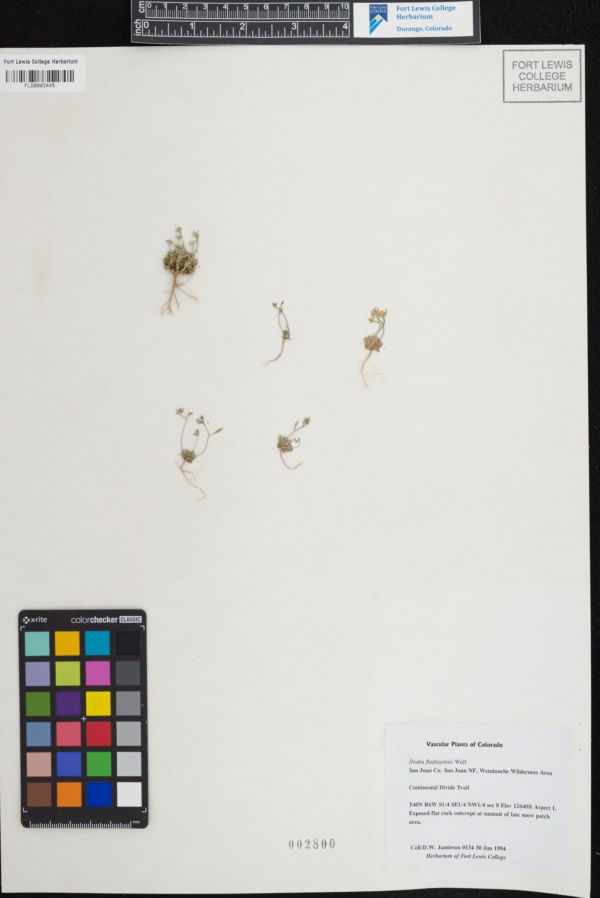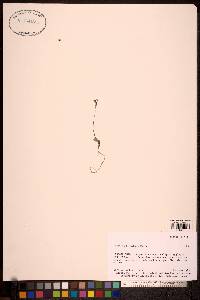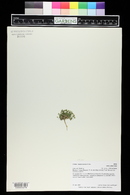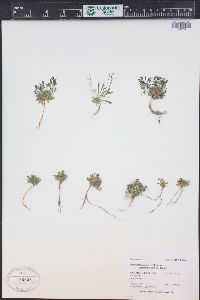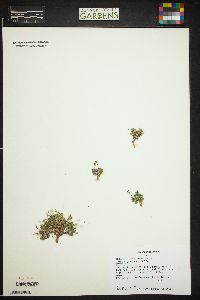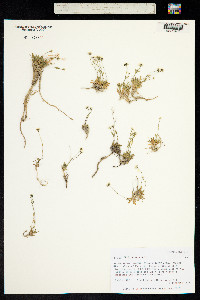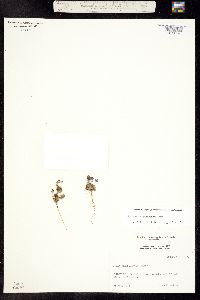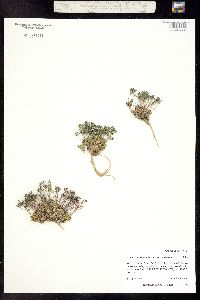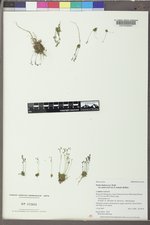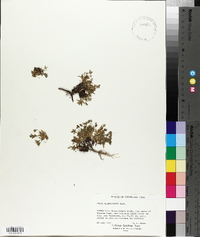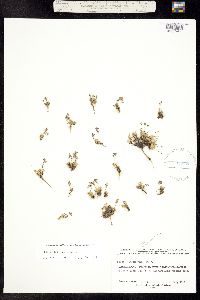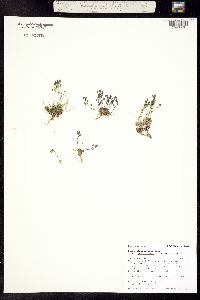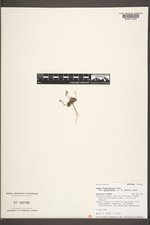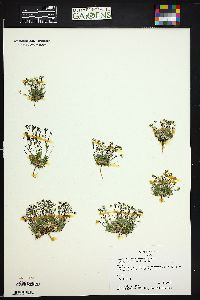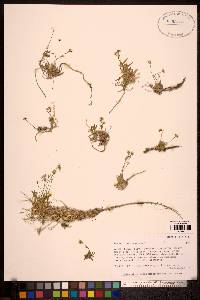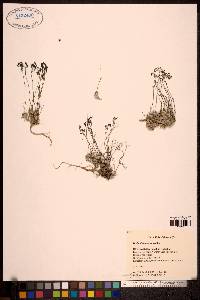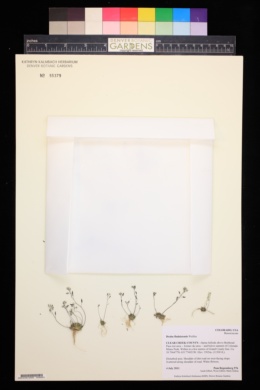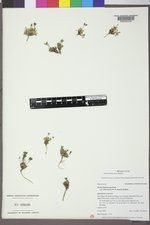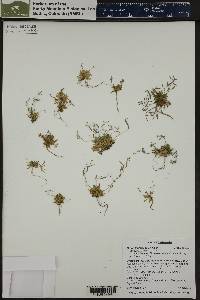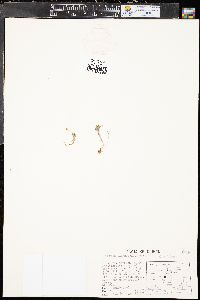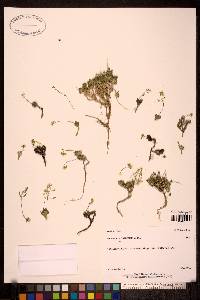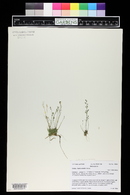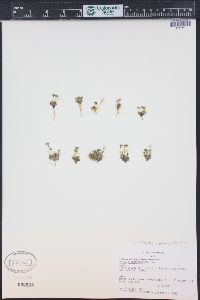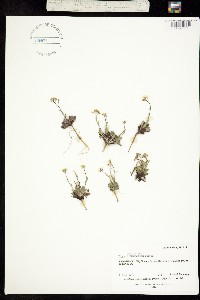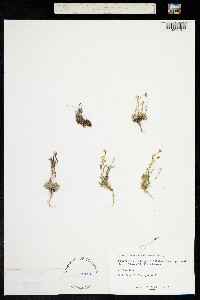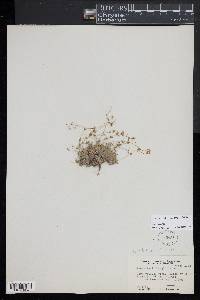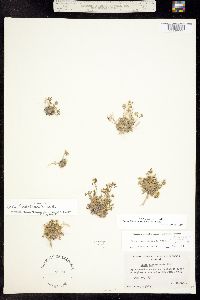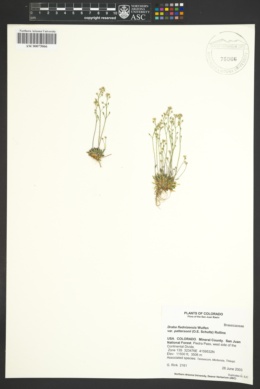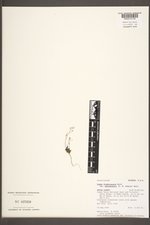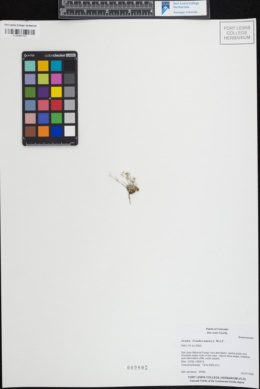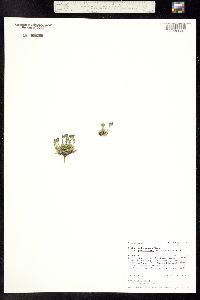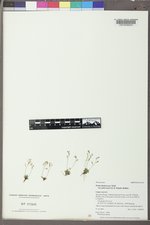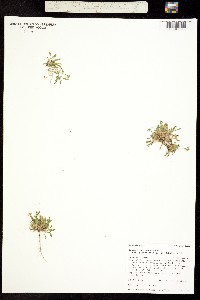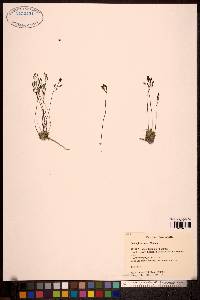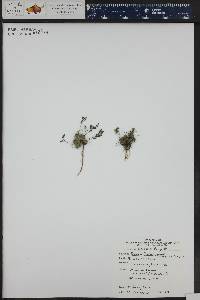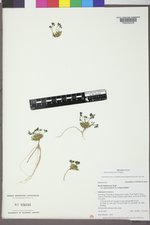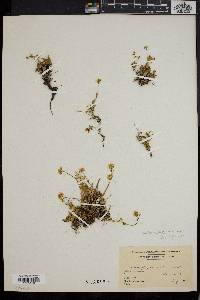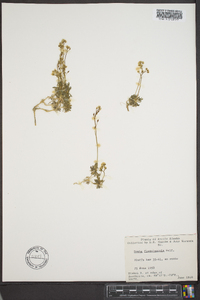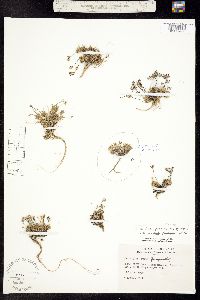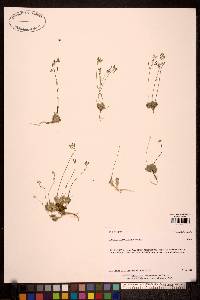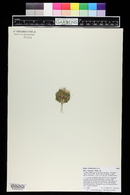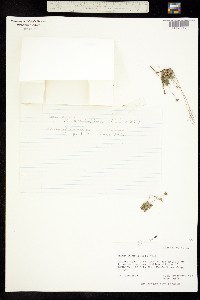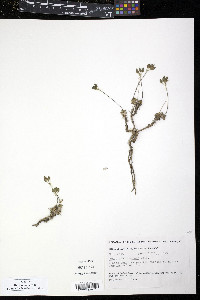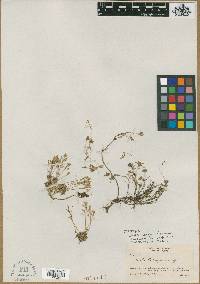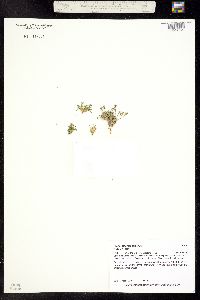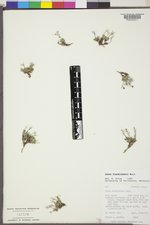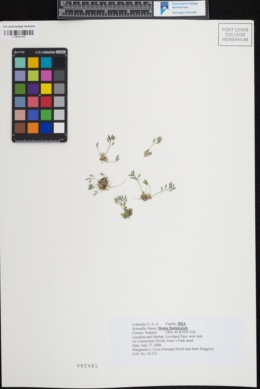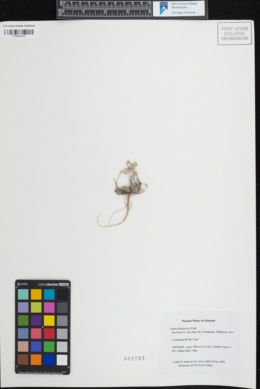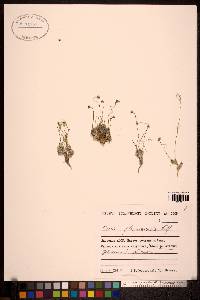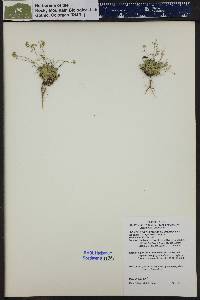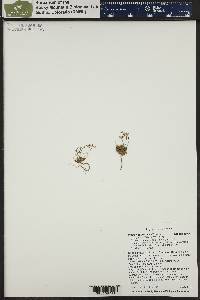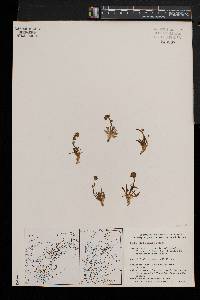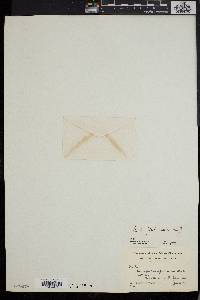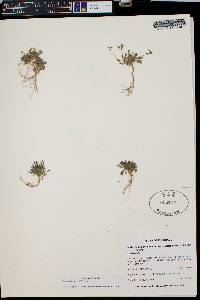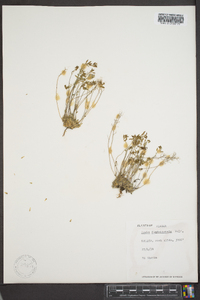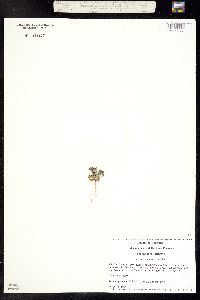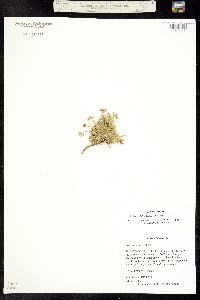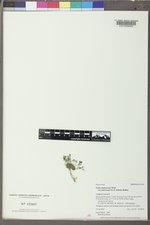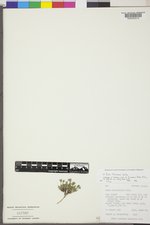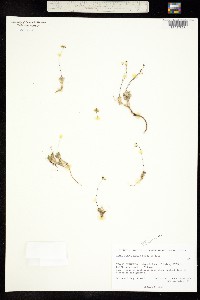Draba fladnizensis
|
|
|
|
Family: Brassicaceae
Austrian Whitlow-Grass
[Draba androsacea Willd.] |
Perennials; (sometimes cespi-tose); caudex simple or branched (with persistent leaf bases); usually scapose. Stems unbranched, (0.2-)0.3-1(-1.3) dm, glabrous. Basal leaves rosulate; petiole (obscure), margin ciliate, (trichomes simple or 2-rayed, 0.25-0.6 mm); blade linear to oblanceolate or narrowly obovate, (0.3-)0.4-1.2(-1.6) cm × 1-3(-4) mm, margins usually entire, rarely toothed, surfaces abaxially pubescent or glabrous, trichomes simple, sometimes with fewer, short-stalked, 2-rayed ones, (midvein prominent), adaxially often glabrous. Cauline leaves 0-2; sessile; blade oblong to ovate, margins entire, (ciliate). Racemes (2 or) 3-11 (-14)-flowered, usually ebracteate, rarely proximalmost flowers bracteate, elongated in fruit; rachis not flexuous, glabrous. Fruiting pedicels divaricate-ascending, often straight, (1-)2-5(-6) mm, glabrous. Flowers: sepals (green or purplish), ovate, 1.2-2.2 mm, glabrous or pubescent, (trichomes simple); petals white, spatulate, 2-2.5 × 0.8-1.5 mm; anthers ovate, 0.2-0.25 mm. Fruits elliptic-lanceolate to oblong, plane, flattened, 3-8 (-9) × 1.5-2 mm; valves glabrous; ovules 12-24 per ovary; style 0.05-0.2(-0.3) mm. Seeds oblong to elliptic, 0.8-1 × 0.5-0.6 mm. 2n = 16. Flowering Jun-Aug. Rock outcrops and talus, alpine meadows, sandy gravel; 0-1400 m at higher latitudes, 3000-3800 m at lower latitudes; Greenland; B.C., N.W.T., Nunavut, Que., Yukon; Alaska, Colo., Utah, Wyo.; c, s Europe; Asia; circumpolar and high alpine areas. Rollins reduced Draba pattersonii to a variety of D. fladnizensis and separated the two primarily on plant size and minor differences in fruit shape. Examination of D. fladnizensis specimens collected throughout Europe and North America reveals that the alleged differences between the two taxa are artificial. The type material of D. pattersonii, which was collected in Colorado, is a mixture of plants highly variable in their type of indumentum. The specimens have no flowers, but the habit, fruits, and leaves are nearly indistinguishable from those of D. fladnizensis from higher latitudes. In the absence of flowers, the white-flowered Draba fladnizensis (2n = 16) is often confused with the yellow-flowered D. crassifolia (2n = 40). The latter is an annual or short-lived perennial that rarely forms a well-developed caudex, whereas D. fladnizensis almost always produces a distinct caudex. Although most individuals of both species are scapose, they occasionally produce one or two cauline leaves. The cauline leaves are usually glabrous in D. crassifolia and ciliate in D. fladnizensis; in the latter, the distalmost cauline leaf usually subtends the proximalmost flower. Finally, the seeds in D. fladnizensis are slightly larger (0.8-0.1 × 0.5-0.6 versus 0.7-0.8 × 0.4-0.5 mm) than those of D. crassifolia, though the reliability of this distinction needs to be examined in greater detail. N. H. Holmgren (2005b) reported D. fladnizensis from central Nevada, but we have not seen any material of the species from that state.
|

